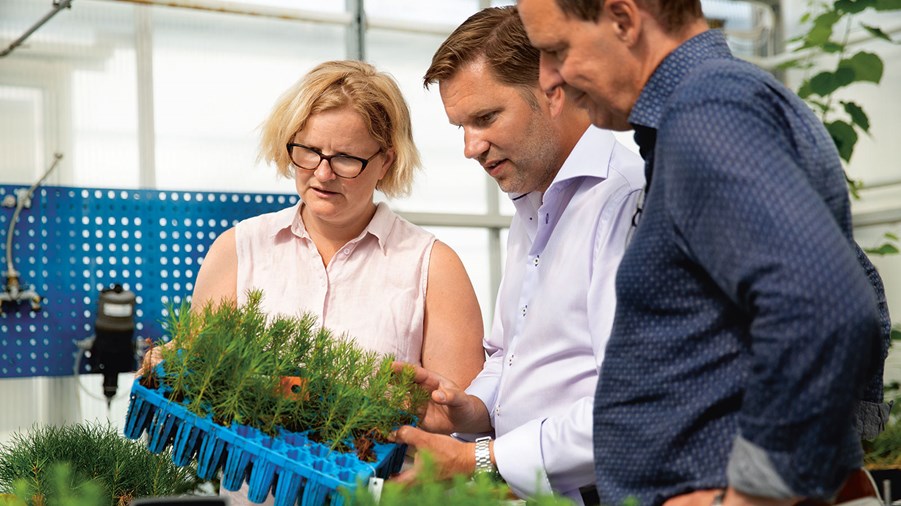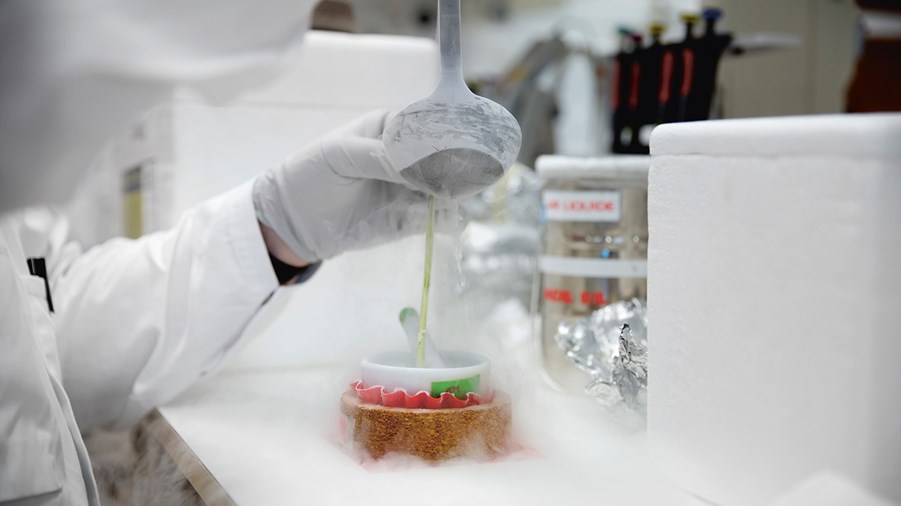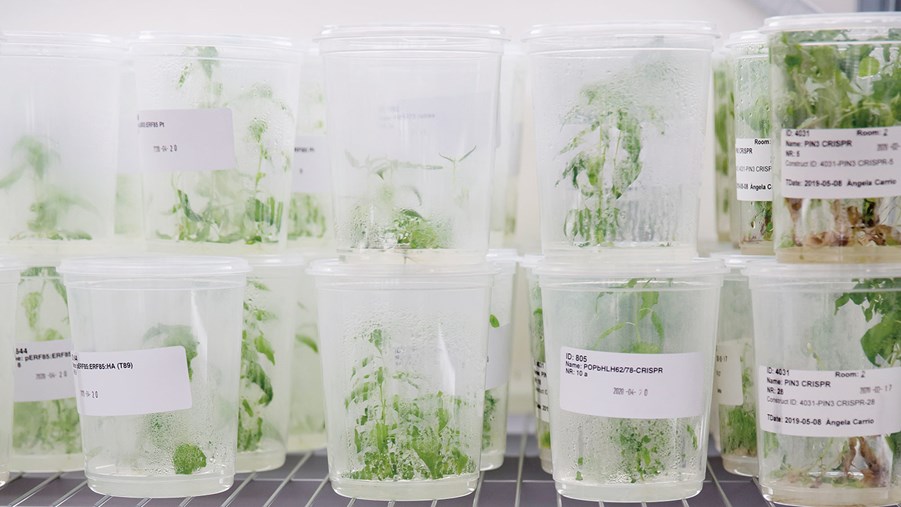
Wood raw material will replace plastic packaging, be made into climate-smart multi-storey buildings, fuel and much more. The areas for which Sweden’s forest can be used are endless, and high volumes of wood are needed to meet demand.
At the same time, the forest is affected by climate change, and the trees of the future need to be durable in new ways to stay healthy. One of the world’s leading tree research bodies, Sweden’s Umeå Plant Science Center (UPSC), is running projects that could help to meet this challenge.
“Our research is about trying to understand how trees work, and to answer the fundamental questions about how different genes impact the properties of the tree. For example, which genes make a spruce tree resistant to infestation or give it a thick trunk? Along the way, we’re also discovering what part the environment plays,” says Ove Nilsson, Professor and Director at UPSC.
In its premises in Umeå, northern Sweden, the centre is studying the genetic variation in spruces and connecting genes to large amounts of data from precision tree breeding in Sweden, such as the growth and diseases of the spruce tree. This gives an understanding of which genes do what.
“When we know which genes give a tree its properties, we can breed spruces and Scots pines that are adapted to our future climate, far more quickly and with greater precision,” Nilsson explains. “This enables us to be better at ensuring the seedlings we plant in the forest are the best suited.”

Sweden has been precision breeding the forest ever since the 1940s
Most of the spruce and Scots pine seedlings planted today have been specially bred. In simple terms, precision breeding is about cross-fertilising two trees with good properties, and then planting their offspring in different environments to see how they fare. The parents of the ‘best’ trees are then used to produce new seedlings. The same procedure is then repeated with the most suitable offspring, and the properties in every generation of refined tree improve. But the process is a slow one. The offspring have to grow for something like 15 years before data on density, height, diameter and so on can be used to analyse the tree’s genetics.
“Thanks to research into identifying genetic markers, we’ll soon be able to take a single needle from a young seedling and see if it has the ‘right’ potential – making selection more reliable. At present, each precision-bred generation is improved by about five per cent, but with this latest technology we should be able to raise that to 15 per cent over the same duration,” says Sara Abrahamsson, a tree breeding researcher at Skogforsk.
High growth is an important characteristic and precision-bred trees grow quicker than non-bred ones.
Beneficial to the climate
“Trees that are healthy and grow quickly are beneficial both to the climate and bioeconomy,” says Ove Nilsson. “The faster a forest grows, the more carbon dioxide it absorbs, and we get more biomass that can be used to replace fossil raw materials.”
But using knowledge of tree genetics in the breeding process is just as important to help the Swedish forest adapt to climate change.
“Current precision breeding is too slow if we want to produce plant material that can withstand new stresses from pests, for example, in time. We need tools that enable us to adapt the seedlings to new conditions faster,” says Nilsson.

Once the seedlings have the right properties, they also need to be available in sufficient quantities for large-scale planting. So imagine being able to take a seed, find out what its properties are, and if they’re ‘right’ cloning it hundreds of thousands of times to make trees in the Swedish forest. This is fully possible, but the cost is a challenge. But a branch-off from UPSC, biotech company SweTree Technologies, has found a solution, and its pilot facility in Umeå will be completed this year.
“We’re using a tried and tested technique, somatic embryogenesis, which is based on making copies of a seed. To date this has only been possible manually, but we’ve managed to automate the entire process which makes it cheaper, and therefore commercially viable,” says Christofer Rhén, CEO of SweTree Technologies. “With this technology we don’t need to wait 20 years for a tree to grow and produce cones for seeds, but can get the best trees into the forest straight away.”
Is it possible have a single clone in an entire forest?
“Well, it’s obviously good to have genetic variation in a forest, to make sure you don’t ‘lose’ all the seedlings if it turns out a particular clone is sensitive to a particular disease or extreme weather. We always use a mixture of different seeds to produce a variety of clones. This enables us to retain and even extend the genetic variation,” says Rhén.
The more knowledge the researchers have about the trees’ genetics, the greater their chances of influencing their properties. In addition to standard precision breeding, UPSC is also looking at genetically modified seedlings, and how under controlled forms the properties of a tree can be boosted or lessened.
“The technologies that can be used for precision plant breeding is controversial, especially in Europe where there are tough laws in place regulating the field,” says Nilsson. “Opponents describe GMO as unnatural and something that puts variation at risk, but scientists are quite unanimous that the risk of this is low and comparable to ‘conventional’ breeding. The modern techniques enable better control of how breeding affects variation.”
Tailored trees
One exciting thought is the ability in future to be able to tailor trees so that they can better help to phase out fossil raw materials, while also providing for the products that need to be made. With GMO, one tree could be bred that’s good for making planks, another that’s ideal for composites, and a third that produces as many high-value products as possible in a biorefinery.
“The key is to proceed gently, while seeing all the potential that exists in a forest that’s been adapted to withstand future climate changes. We’ve only scratched the surface of what’s possible,” Ove Nilsson concludes.
